-
 Bitcoin
Bitcoin $106,754.6083
1.33% -
 Ethereum
Ethereum $2,625.8249
3.80% -
 Tether USDt
Tether USDt $1.0001
-0.03% -
 XRP
XRP $2.1891
1.67% -
 BNB
BNB $654.5220
0.66% -
 Solana
Solana $156.9428
7.28% -
 USDC
USDC $0.9998
0.00% -
 Dogecoin
Dogecoin $0.1780
1.14% -
 TRON
TRON $0.2706
-0.16% -
 Cardano
Cardano $0.6470
2.77% -
 Hyperliquid
Hyperliquid $44.6467
10.24% -
 Sui
Sui $3.1128
3.86% -
 Bitcoin Cash
Bitcoin Cash $455.7646
3.00% -
 Chainlink
Chainlink $13.6858
4.08% -
 UNUS SED LEO
UNUS SED LEO $9.2682
0.21% -
 Avalanche
Avalanche $19.7433
3.79% -
 Stellar
Stellar $0.2616
1.64% -
 Toncoin
Toncoin $3.0222
2.19% -
 Shiba Inu
Shiba Inu $0.0...01220
1.49% -
 Hedera
Hedera $0.1580
2.75% -
 Litecoin
Litecoin $87.4964
2.29% -
 Polkadot
Polkadot $3.8958
3.05% -
 Ethena USDe
Ethena USDe $1.0000
-0.04% -
 Monero
Monero $317.2263
0.26% -
 Bitget Token
Bitget Token $4.5985
1.68% -
 Dai
Dai $0.9999
0.00% -
 Pepe
Pepe $0.0...01140
2.44% -
 Uniswap
Uniswap $7.6065
5.29% -
 Pi
Pi $0.6042
-2.00% -
 Aave
Aave $289.6343
6.02%
Is the dark cloud cover at the weekly level a mid-term peak? Should I clear the position?
A weekly Dark Cloud Cover in crypto signals potential bearish reversal, urging traders to watch for confirmation via volume, RSI, or MACD before adjusting positions.
Jun 17, 2025 at 02:21 pm
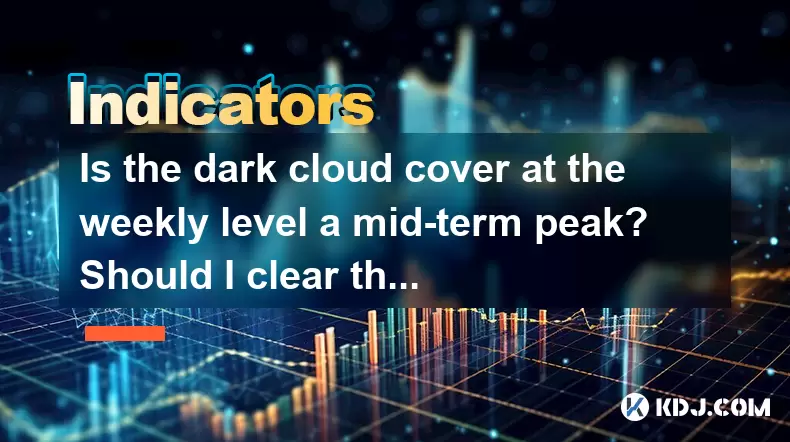
Understanding the Dark Cloud Cover Pattern
The Dark Cloud Cover is a well-known candlestick pattern used by technical analysts to identify potential trend reversals from bullish to bearish. It typically forms at the end of an uptrend and consists of two candles: the first is a strong bullish (green) candle, followed by a bearish (red) candle that opens higher but closes significantly below the midpoint of the previous candle. This pattern suggests weakening buyer momentum and increasing selling pressure.
In the context of cryptocurrency markets, where volatility is high and sentiment-driven moves are common, the appearance of a Dark Cloud Cover at the weekly level carries more weight than on shorter timeframes. The weekly chart reflects long-term price behavior and is often monitored by institutional investors and long-term traders.
Key Insight: A weekly Dark Cloud Cover may indicate that the current rally is losing steam and could lead to a significant correction or consolidation period.
What Does a Weekly-Level Dark Cloud Cover Signify?
When the Dark Cloud Cover appears on the weekly chart, it's often interpreted as a stronger reversal signal compared to intraday or daily charts. This is because each candle represents a full week of market activity, incorporating broader sentiment, macroeconomic news, and investor positioning.
- A strong green candle indicates continued buying pressure.
- A red candle opening above the previous close but closing deep into the prior candle’s range signals that sellers have taken control.
- If this pattern occurs after a prolonged uptrend in a crypto asset like Bitcoin or Ethereum, it can be seen as a warning sign.
Important Note: The effectiveness of this pattern increases when confirmed by other indicators such as RSI divergence, volume spikes, or moving average crossovers.
How to Confirm the Relevance of the Pattern
Before making any trading decisions based solely on the Dark Cloud Cover, it's essential to look for additional confirmation signals:
- Volume Analysis: A sharp increase in volume during the formation of the bearish candle enhances the reliability of the pattern.
- RSI Divergence: If the Relative Strength Index shows overbought conditions followed by a drop below 50, it supports the idea of a reversal.
- Fibonacci Retracement Levels: Check if the price is near key resistance zones which might coincide with the reversal zone.
- Market Sentiment: Analyze on-chain data, social media trends, and macro developments (e.g., regulatory updates or Fed policy changes).
Critical Step: Avoid acting impulsively on the first sign of the pattern. Wait for at least one more weekly candle to confirm the direction before considering position adjustments.
Should You Clear Your Position Entirely?
Deciding whether to clear your position entirely depends on your investment strategy, risk tolerance, and portfolio allocation. For short-term traders or swing traders, a weekly-level Dark Cloud Cover may serve as a timely exit point to lock in gains and avoid potential downside. However, long-term investors may view this as a normal pullback within a larger bullish cycle.
Consider the following points:
- Profit Targets: Have you already achieved your profit goals? If yes, trimming or exiting partially makes sense.
- Risk Management: Is your stop-loss triggered or about to be? If so, exiting aligns with disciplined trading.
- Portfolio Allocation: Are you overexposed to a single asset? Reducing exposure may help diversify risk.
- Alternative Opportunities: Do you see better setups elsewhere? If so, reallocating capital could be beneficial.
Practical Tip: Instead of clearing all positions immediately, consider scaling out — selling a portion now and keeping the rest in case the trend continues unexpectedly.
Technical Indicators That Complement the Dark Cloud Cover
To make a more informed decision, combine the Dark Cloud Cover with other technical tools:
- MACD (Moving Average Convergence Divergence): Look for a bearish crossover or declining histogram bars.
- Ichimoku Cloud: If price breaks below the cloud and the Tenkan-sen crosses below the Kijun-sen, it reinforces the bearish outlook.
- Volume Profile: Observe where most trading occurred during the week — if the bearish candle absorbed heavy volume at critical levels, the reversal is more credible.
- On-Chain Metrics: Tools like exchange inflows/outflows, whale movements, and realized price can provide deeper insights into market structure.
Advanced Strategy: Use multi-timeframe analysis — check the daily and 4-hour charts to spot early signs of capitulation or accumulation.
Frequently Asked Questions
Q1: Can the Dark Cloud Cover appear in bullish markets too?
Yes, while it's primarily a bearish reversal pattern, its significance depends heavily on the context. In strong bullish trends, it may act as a temporary pause rather than a full reversal.
Q2: How reliable is the Dark Cloud Cover in cryptocurrency compared to traditional assets?
Cryptocurrencies are more volatile and less liquid in some cases, which can make candlestick patterns like the Dark Cloud Cover less reliable unless confirmed by volume and other indicators.
Q3: Should I use automated tools to detect Dark Cloud Covers on weekly charts?
Yes, many trading platforms and bots allow users to set alerts for specific candlestick patterns. However, always verify manually before taking action.
Q4: What should I do if the next weekly candle negates the Dark Cloud Cover?
If the subsequent candle shows strong bullish behavior, especially breaking above the high of the Dark Cloud Cover, it invalidates the reversal signal and suggests continuation.
Disclaimer:info@kdj.com
The information provided is not trading advice. kdj.com does not assume any responsibility for any investments made based on the information provided in this article. Cryptocurrencies are highly volatile and it is highly recommended that you invest with caution after thorough research!
If you believe that the content used on this website infringes your copyright, please contact us immediately (info@kdj.com) and we will delete it promptly.
- 2025-W Uncirculated American Gold Eagle and Dr. Vera Rubin Quarter Mark New Products
- 2025-06-13 06:25:13
- Ruvi AI (RVU) Leverages Blockchain and Artificial Intelligence to Disrupt Marketing, Entertainment, and Finance
- 2025-06-13 07:05:12
- H100 Group AB Raises 101 Million SEK (Approximately $10.6 Million) to Bolster Bitcoin Reserves
- 2025-06-13 06:25:13
- Galaxy Digital CEO Mike Novogratz Says Bitcoin Will Replace Gold and Go to $1,000,000
- 2025-06-13 06:45:13
- Trust Wallet Token (TWT) Price Drops 5.7% as RWA Integration Plans Ignite Excitement
- 2025-06-13 06:45:13
- Ethereum (ETH) Is in the Second Phase of a Three-Stage Market Cycle
- 2025-06-13 07:25:13
Related knowledge
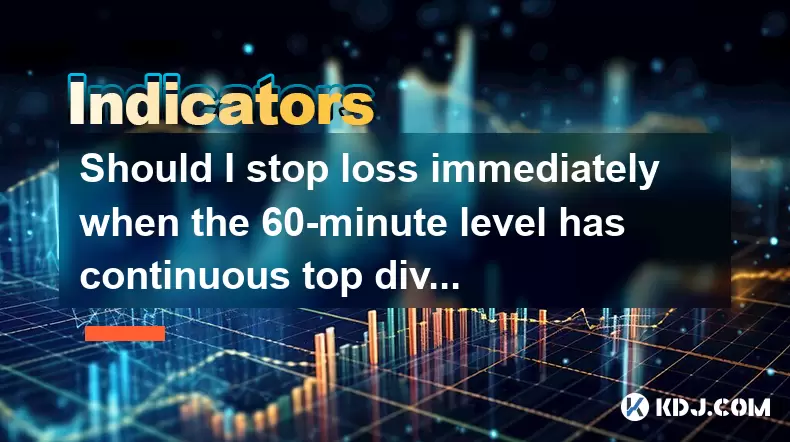
Should I stop loss immediately when the 60-minute level has continuous top divergence?
Jun 17,2025 at 05:28pm
Understanding Top Divergence in the 60-Minute ChartIn cryptocurrency trading, top divergence refers to a technical signal where the price of an asset makes higher highs while the indicator (often RSI or MACD) makes lower lows. This is commonly interpreted as a sign of weakening momentum and potential reversal. When this occurs on the 60-minute chart, it...
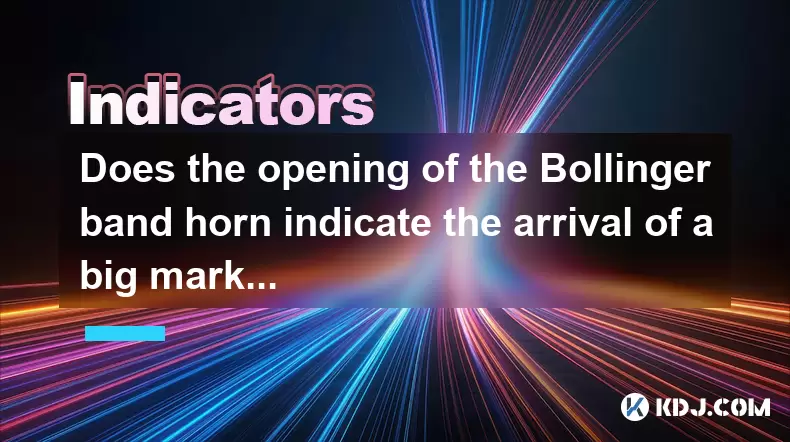
Does the opening of the Bollinger band horn indicate the arrival of a big market?
Jun 17,2025 at 06:28pm
Understanding the Bollinger Bands and Their StructureBollinger Bands are a widely used technical analysis tool in the cryptocurrency market, developed by John Bollinger. They consist of three lines: a simple moving average (SMA), typically set at 20 periods, and two standard deviation bands above and below this SMA. These bands dynamically expand and co...
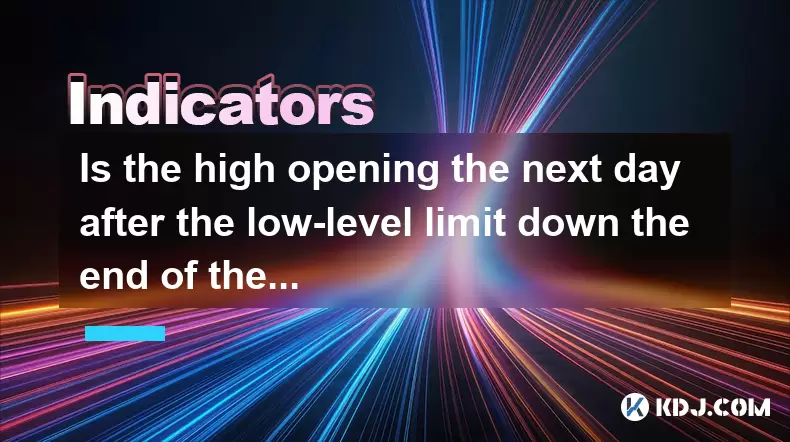
Is the high opening the next day after the low-level limit down the end of the wash?
Jun 17,2025 at 05:57pm
Understanding the Concept of a Limit Down and Its ImplicationsIn the world of cryptocurrency trading, a limit down refers to a situation where the price of a digital asset drops sharply, reaching its maximum allowable decline within a specific time frame. This mechanism is often seen on exchanges that implement daily price limits to prevent excessive vo...
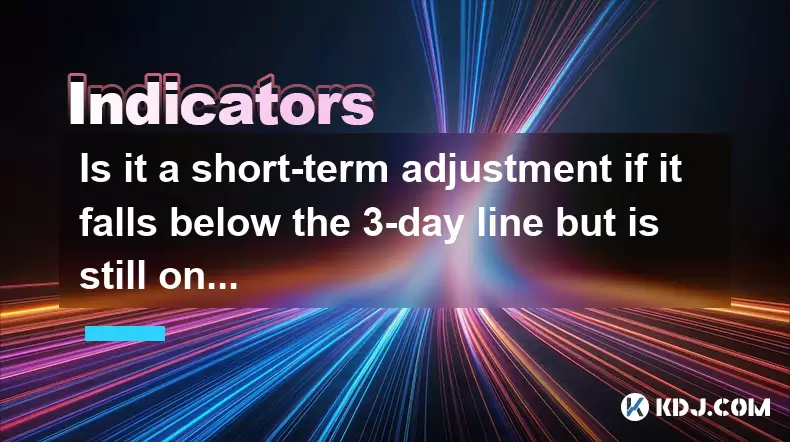
Is it a short-term adjustment if it falls below the 3-day line but is still on the 10-day line?
Jun 17,2025 at 04:07pm
Understanding the 3-Day and 10-Day Moving AveragesIn cryptocurrency trading, moving averages are essential tools for gauging trend strength and potential reversals. The 3-day moving average is a short-term indicator that reflects recent price action with minimal lag, making it highly sensitive to sudden market shifts. In contrast, the 10-day moving aver...
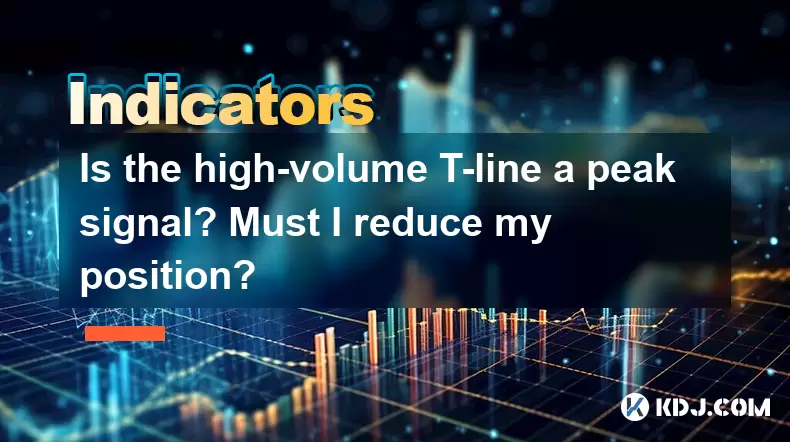
Is the high-volume T-line a peak signal? Must I reduce my position?
Jun 17,2025 at 06:07pm
Understanding the T-Line Pattern in Cryptocurrency TradingIn cryptocurrency trading, technical patterns are frequently used by traders to anticipate price movements. One such pattern is the T-line, which appears on candlestick charts and is characterized by a long upper or lower shadow with little or no body. A high-volume T-line occurs when this patter...
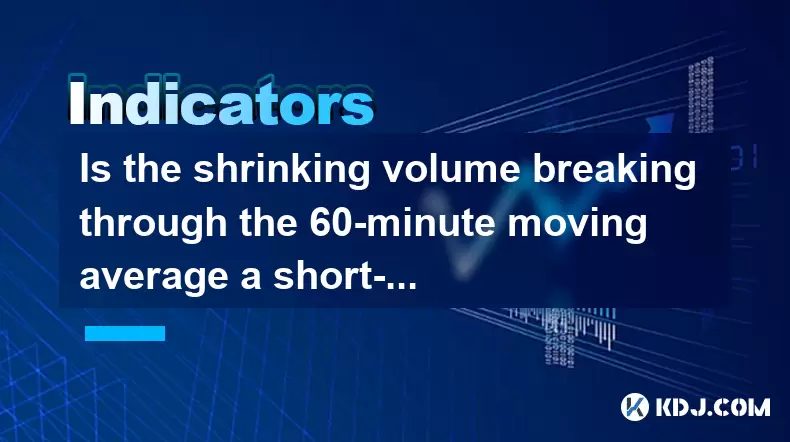
Is the shrinking volume breaking through the 60-minute moving average a short-term weakness? Should I run?
Jun 17,2025 at 06:21pm
Understanding the 60-Minute Moving Average in Cryptocurrency TradingIn cryptocurrency trading, the 60-minute moving average is a popular technical indicator used by traders to assess short-term trends. This metric calculates the average price of an asset over the last 60 minutes and updates with each passing minute. Traders often use it to identify pote...

Should I stop loss immediately when the 60-minute level has continuous top divergence?
Jun 17,2025 at 05:28pm
Understanding Top Divergence in the 60-Minute ChartIn cryptocurrency trading, top divergence refers to a technical signal where the price of an asset makes higher highs while the indicator (often RSI or MACD) makes lower lows. This is commonly interpreted as a sign of weakening momentum and potential reversal. When this occurs on the 60-minute chart, it...

Does the opening of the Bollinger band horn indicate the arrival of a big market?
Jun 17,2025 at 06:28pm
Understanding the Bollinger Bands and Their StructureBollinger Bands are a widely used technical analysis tool in the cryptocurrency market, developed by John Bollinger. They consist of three lines: a simple moving average (SMA), typically set at 20 periods, and two standard deviation bands above and below this SMA. These bands dynamically expand and co...

Is the high opening the next day after the low-level limit down the end of the wash?
Jun 17,2025 at 05:57pm
Understanding the Concept of a Limit Down and Its ImplicationsIn the world of cryptocurrency trading, a limit down refers to a situation where the price of a digital asset drops sharply, reaching its maximum allowable decline within a specific time frame. This mechanism is often seen on exchanges that implement daily price limits to prevent excessive vo...

Is it a short-term adjustment if it falls below the 3-day line but is still on the 10-day line?
Jun 17,2025 at 04:07pm
Understanding the 3-Day and 10-Day Moving AveragesIn cryptocurrency trading, moving averages are essential tools for gauging trend strength and potential reversals. The 3-day moving average is a short-term indicator that reflects recent price action with minimal lag, making it highly sensitive to sudden market shifts. In contrast, the 10-day moving aver...

Is the high-volume T-line a peak signal? Must I reduce my position?
Jun 17,2025 at 06:07pm
Understanding the T-Line Pattern in Cryptocurrency TradingIn cryptocurrency trading, technical patterns are frequently used by traders to anticipate price movements. One such pattern is the T-line, which appears on candlestick charts and is characterized by a long upper or lower shadow with little or no body. A high-volume T-line occurs when this patter...

Is the shrinking volume breaking through the 60-minute moving average a short-term weakness? Should I run?
Jun 17,2025 at 06:21pm
Understanding the 60-Minute Moving Average in Cryptocurrency TradingIn cryptocurrency trading, the 60-minute moving average is a popular technical indicator used by traders to assess short-term trends. This metric calculates the average price of an asset over the last 60 minutes and updates with each passing minute. Traders often use it to identify pote...
See all articles

























































































